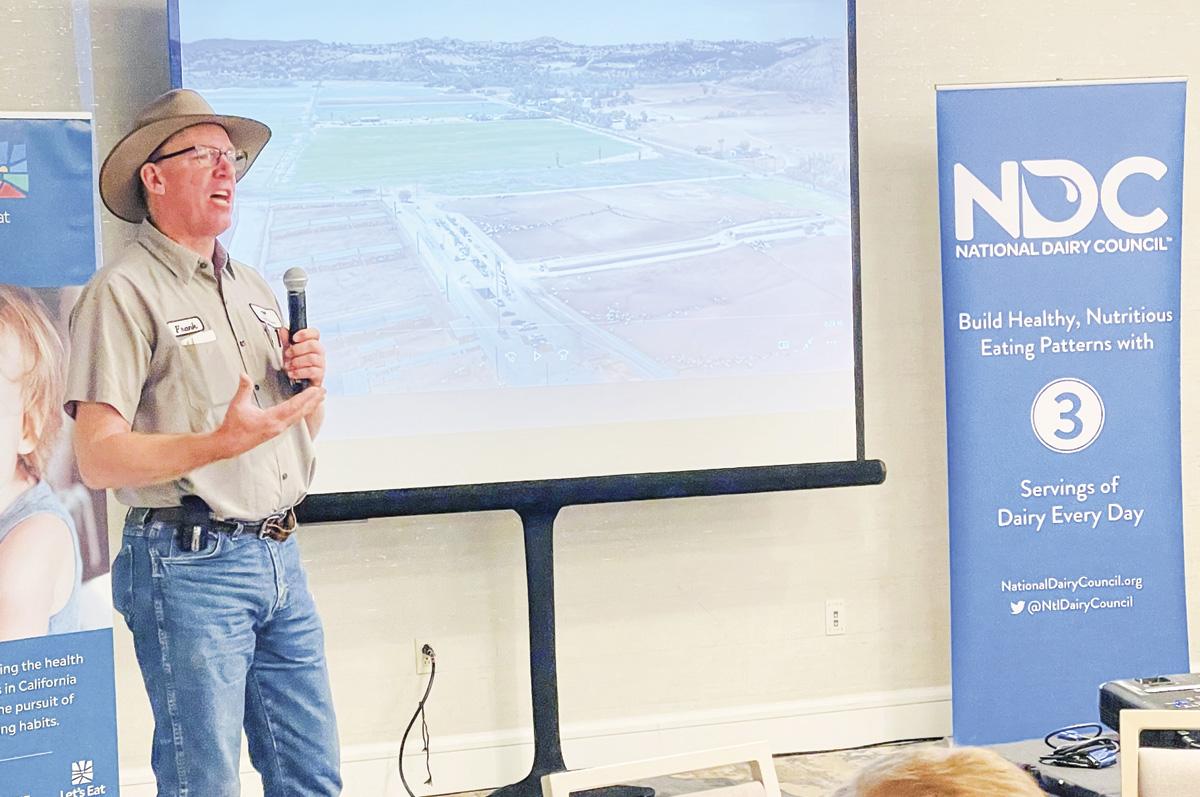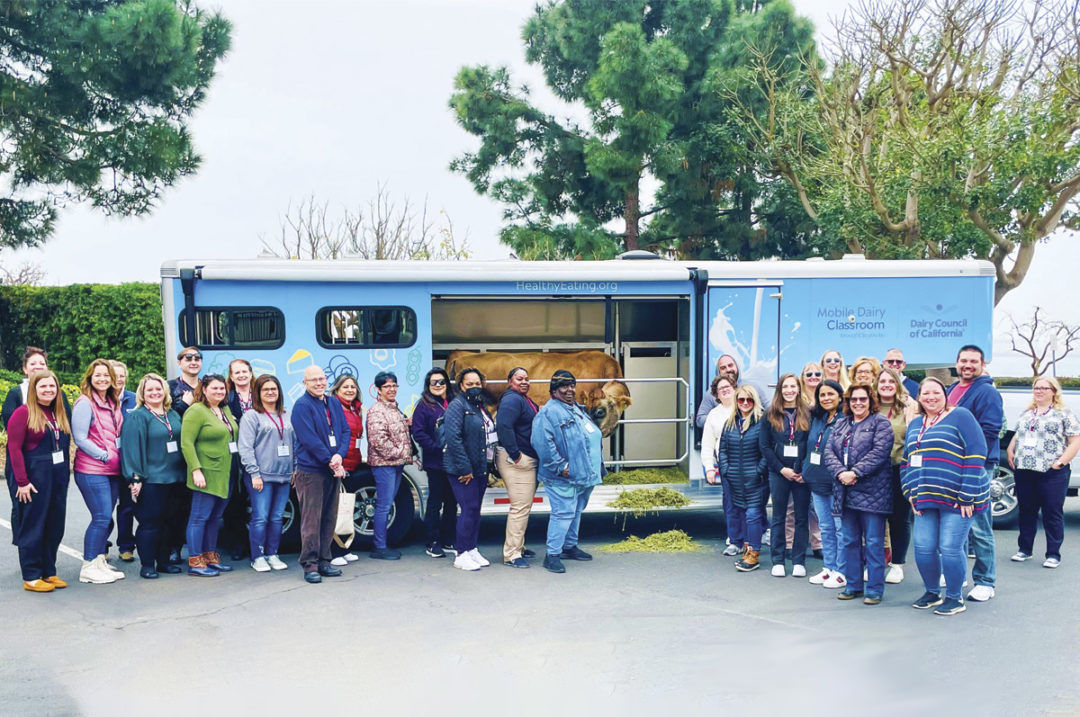It was not a good day for a farm tour in southern California on Jan. 12, 2023.
Frank Konyn, who operates the last dairy in San Diego County, had worked with the dairy checkoff to host a group of school nutrition professionals at his farm. But Konyn said his region received two-thirds of its yearly rainfall in less than two weeks leading up to that day.
“Those are not normal conditions,” Konyn says. “If I was showing dairy farmers around, I wouldn’t have had a problem. But showing people who may have never been on a dairy before, I didn’t think it would make the right impression.”
While the visit was rained out, Konyn and members of the National Dairy Council (NDC) and the Dairy Council of California shifted gears and brought the farm experience to the hotel that hosted the School Nutrition Association (SNA) conference. The timing was good, as Konyn had just finished producing a farm tour video that he plans to use with his local Agriculture in the Classroom efforts.
The video provided the 32 SNA attendees with an overview of his dairy. Konyn says the questions and conversation that followed made a bigger impact.
“We answered questions just as we would for anyone who is out on a tour,” Konyn says. “I always tell people, ‘You ask the questions, and this tour will go wherever your questions take us.’ I’m an open book. I don’t use a premade speech. I’ll answer any question.
“So many people have a misunderstanding about what happens on a farm and how complicated it is to produce that glass of milk,” he says. “I have found that once you start talking with people and you share everything that goes on behind the scenes, all of a sudden, they see it’s more complicated than just milking a cow and sending the milk to the store.”
 California dairy producer Frank Konyn shares his farm's story to a group of school nutrition professionals.
California dairy producer Frank Konyn shares his farm's story to a group of school nutrition professionals.
Photo provided by Scott Wallin.
Stacey Bettis, food service director for Stark County Educational Service Center in Ohio, was among the session’s attendees. While Bettis says she has a basic understanding of agriculture, having grown up in a rural part of Ohio, she knows the same cannot be said for many of the students who encompass the three school districts she oversees.
“I’m a country girl, but I think about the kids who don’t have that experience,” Bettis says. “They think milk comes from the grocery store. They don’t have the opportunity of knowing what it’s like to go and milk a cow.”
Bettis also was excited to see how the Dairy Council of California educates about dairy farming via its mobile dairy classroom. The traveling exhibit – featuring a cow and an agriculture instructor – provided a hands-on complement to Konyn, who made a powerful impact with his sustainability story.
Konyn collects about 225 tons of spent grains from local breweries each week, which serves as a nutritious source of feed for his nearly 900 milking cows. He also started a composting business in which he partners with landscaping companies to take their green waste and trimmings. It is mixed with his cow manure and results in 27 composting products available in the marketplace.
“What made an impression on me was Frank’s ability to look into the future with the amount of sustainability work he is doing,” Bettis says. “I don’t think any of us were aware of all that goes into something like that, and it caught our attention. A farmer never sleeps. They’re always going.”
Katie Bambacht, registered dietitian nutritionist (RDN), licensed dietitian/nutritionist (LDN), school nutrition specialist (SNS), who serves as vice president of school nutrition for NDC, says interactions such as this are critical to educating about the dairy community that makes nutrient-rich milk and dairy foods possible. She says SNA is the country’s largest association of school nutrition professionals who are responsible for nourishing nearly 30 million children every day.
“Dairy is a big part of the school meal program, and with school nutrition professionals being on the front lines, they receive questions from students and parents about dairy and where it comes from,” Bambacht says. “What are the farm practices and how do they impact the environment? What are farmers doing to take care of their cows and the planet? As the dairy community, we need to be the ones educating them and connecting them with dairy farmers to help tell the story of where food comes from.”
And while Konyn had to rearrange his day and drive nearly an hour to the conference, he also agrees it was time well spent.
“If you’re not at the table, you’re on the menu,” Konyn says. “Even though I talked to a lot of people who already were on board about dairy, maybe I turned the hearts of one or two or three. And who knows, they may be in a city like Chicago where they have a couple hundred thousand kids. If you don’t go out and deliver the facts, others will set the definition of dairy for us. These professionals were there for a school nutrition program, but now milk is not just milk. It takes on a new meaning because they met a farmer.”
Click here to learn more about your national dairy checkoff or to reach us directly, send an email.
Scott Wallin is the vice president of industry media relations at Dairy Management Inc.










